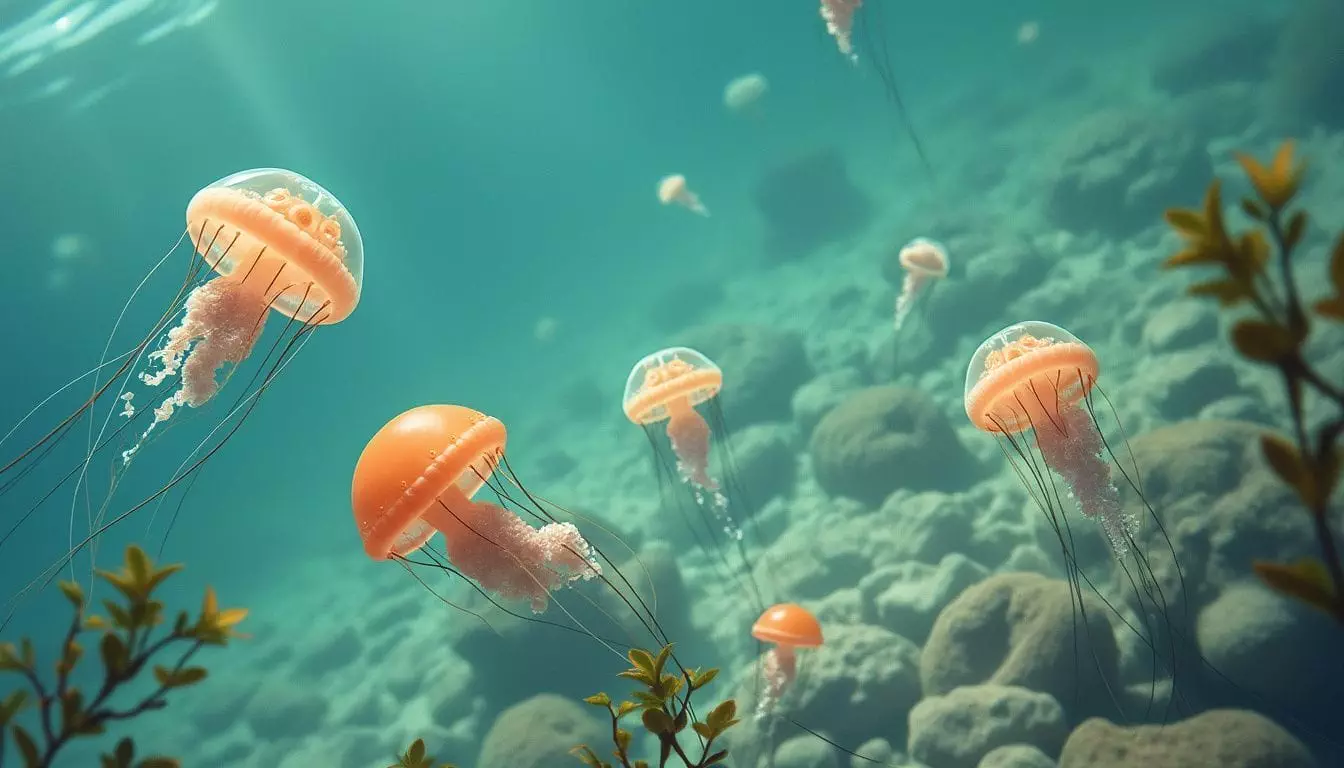Your Guide to Common Jellyfish in the Philippines: Avoiding the Sting During Jellyfish Season
Jellyfish season in the Philippines can turn your beach trip into a painful experience. Common jellyfish in the Philippines include moon jellies, box jellyfish, and the deadly kingslayer jellyfish.
These sea creatures lurk in coastal waters, lagoons, and popular swimming spots. Their stings range from mild irritation to life-threatening reactions.
As a marine biologist with 15 years of studying jellyfish behavior, I’ve seen firsthand the impact of these gelatinous creatures on beachgoers. This guide will help you identify common jellyfish species, understand their habits, and learn essential safety measures.
Stay safe during your Philippine beach adventures.
Key Takeaways
- Common jellyfish in the Philippines include moon jellies, box jellyfish, and kingslayer jellyfish.
- Jellyfish season peaks from March to May and June to October in the Philippines.
- Wear protective clothing, use jellyfish repellent, and swim in safe areas to avoid stings.
- If stung, rinse with vinegar for 30 seconds, remove tentacles, and apply heat to the area.
- Call 166 for emergency help in Cebu if you have a bad reaction to a jellyfish sting.
Recognizing Common Jellyfish Species in the Philippines

Know Your Jellies
The Philippines has many jellyfish types. Learn to spot the common ones to stay safe at the beach.
Moon Jelly (Aurelia aurita)Moon jellies float gracefully in Philippine waters. You’ll spot these clear, saucer-shaped creatures near the coast during warm months. Their four horseshoe-shaped organs stand out inside their see-through bodies.
Knowing how to identify moon jellies helps you avoid stings while swimming. Watch for their gentle pulsing motion as they drift by in shallow areas.
These common jellies don’t pose a big threat, but it’s smart to keep your distance. Their sting is mild compared to other species. Still, touching one can cause skin irritation. As you enjoy Cebu’s beaches, stay alert for these floating beauties.
Admire them from afar to ensure a safe and fun beach day.
Box Jellyfish
Unlike their harmless cousins, Box Jellyfish pose a serious threat. These sea creatures have a cube-shaped body and long tentacles. They swim in warm, shallow waters near beaches. Box Jellyfish pack a powerful punch with their venom.
Their sting can cause severe pain, skin damage, and even death in rare cases.
You need to stay alert for Box Jellyfish when swimming in Philippine waters. They often appear during April and May. Look out for warning signs at beaches. Wear protective clothing if you must enter the water.
If stung, get out fast and seek medical help right away. Quick action can save lives when dealing with these dangerous jellies.
Kingslayer Jellyfish (Malo kingi)
Box jellyfish aren’t the only threat in Philippine waters. Meet the Kingslayer Jellyfish, or Malo kingi. This tiny terror packs a powerful punch. Its venom can cause severe pain, breathing problems, and even heart failure.
Malo kingi lives in warm, shallow seas. It’s hard to spot due to its small size and clear body. Swimmers and divers must stay alert during jellyfish season. Knowing about this species helps you enjoy the ocean safely.
Always follow local warnings and wear protective gear when needed.
Understanding Jellyfish Habitat and Seasonality
Jellyfish thrive in warm, shallow waters near coasts. They show up more during certain months, often when the sea gets warmer.
Typical habitats
Jellyfish thrive in warm, coastal waters of the Philippines. You’ll often spot them near sandy beaches, mangroves, and coral reefs. These sea creatures love nutrient-rich spots like estuaries.
During hot months, they swim closer to shore.
The ocean is home to countless jellyfish, floating gracefully in the currents.
Warm temps and food-rich areas draw jellyfish to the coasts. They drift in shallow waters, bays, and lagoons. You might see them in places where rivers meet the sea. Their clear bodies blend with the water, so watch out when you swim!
Peak seasons for jellyfish presence
After learning about jellyfish homes, let’s look at when you’ll see them most. Jellyfish show up more in certain months. In the Philippines, you’ll spot more jellyfish from March to May.
This is the hot season. The warm waters make jellyfish grow faster.
More jellyfish also appear from June to October. This is monsoon season. Heavy rains wash nutrients into the sea. These nutrients feed tiny sea life that jellyfish eat. With more food, jellyfish numbers go up.
Be extra careful at the beach during these times. Always check local reports before swimming.
Safety Measures and First Aid for Jellyfish Stings
Safety first! Learn how to avoid jellyfish stings and what to do if you get stung. This guide covers prevention tips and quick first aid steps to ease the pain.
Preventive practices
Jellyfish stings can ruin your beach trip. Here are some ways to stay safe during jellyfish season:
- Wear protective clothing: Cover up with rash guards, wetsuits, or long-sleeved swimwear to shield your skin.
- Use jellyfish repellent: Apply a safe, eco-friendly repellent to exposed skin before swimming.
- Swim in designated areas: Stick to beaches with lifeguards and protective nets.
- Check beach warnings: Look for posted signs about jellyfish sightings or dangers.
- Avoid peak hours: Swim early morning or late afternoon when jellyfish are less active.
- Stay alert: Watch for jellyfish in the water and on the shore.
- Bring vinegar: Pack a small bottle to rinse stings quickly if needed.
- Use protective gear: Wear water shoes and gloves for added safety.
- Learn local species: Familiarize yourself with common jellyfish in the area.
- Follow local advice: Listen to locals and tour guides about safe swimming spots.
Immediate actions post-sting
Quick action after a jellyfish sting can reduce pain and prevent complications. Follow these steps if you’re stung:
- Rinse with vinegar: Pour vinegar over the sting site for at least 30 seconds to neutralize venom.
- Remove tentacles: Use tweezers to carefully take off any stuck tentacles from your skin.
- Apply heat: Put a hot pack on the area or soak it in hot water (as hot as you can stand) for about 20 minutes.
- Avoid freshwater: Don’t rinse with fresh water, as it can cause more venom release.
- Take pain relief: Use over-the-counter pain meds like ibuprofen to help with discomfort.
- Watch for reactions: Look out for signs of allergy such as trouble breathing or swelling.
- Seek medical help: Go to a doctor if you have severe pain, allergic symptoms, or were stung on the face or neck.
- Don’t use ice: Cold can make the pain worse, so skip the ice packs.
- Avoid old remedies: Don’t use meat tenderizer, alcohol, or urine on the sting – they don’t work.
- Stay calm: Panic can make symptoms feel worse, so try to relax and breathe deeply.
Emergency hotlines and services in Cebu
After taking immediate action for a jellyfish sting, you may need more help. Cebu offers quick emergency services for such cases. The city has a 24/7 hotline at 166 for medical needs.
This number connects you to ambulances and hospitals fast.
Cebu’s beaches also have lifeguards trained in jellyfish sting care. They can give first aid and call for more help if needed. Some resorts even keep special jellyfish sting kits on hand.
These kits have items to ease pain and stop the spread of venom. If you’re far from shore, boat patrols can reach you quickly. They bring medical staff to treat stings right away.
Conclusion
Stay safe during jellyfish season in the Philippines. Know the common species and their habitats. Learn first aid for stings. Pack protective gear when swimming. Enjoy the beach while keeping an eye out for these sea creatures.
FAQs
1. What are common jellyfish in the Philippines?
Moon jellyfish, box jellies, and stingless jellyfish are common in Philippine waters. Some, like the box jellyfish, have lethal toxins. Others, like those in Sohoton, are harmless.
2. How can I avoid jellyfish stings?
Watch for jellyfish warnings. Wear protective gear when swimming. Avoid areas with lots of jellyfish. Be extra careful during jellyfish season. Look out for jelly-like creatures washed up on shore.
3. What should I do if stung by a jellyfish?
Get out of the water fast. Remove any tentacles. Rinse with seawater, not fresh water. Apply vinegar to the affected area. Seek medical help if stung on the chest or face.
4. Are all jellyfish dangerous?
No, not all jellyfish are dangerous. Some, like moon jellyfish, cause mild reactions. But others, like box jellies, are among the deadliest sea creatures. Always be careful around any jellyfish.
5. How do recent climate patterns affect jellyfish in the Philippines?
Climate change impacts jellyfish populations. Warmer waters may lead to more jellyfish in some areas. This can affect island hopping and swimming activities. Always check local conditions before entering the water.
6. What’s the first aid for jellyfish stings in the Philippines?
Filipinos often use ground leaves as a remedy. But vinegar is still the recommended first aid. Don’t use fresh water or ice. Seek medical help if symptoms worsen. Pain relievers can help with discomfort.







